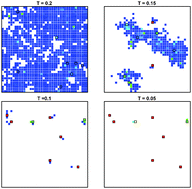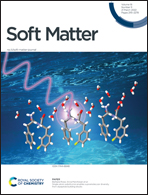Emergence of two-level systems in glass formers: a kinetic Monte Carlo study
Abstract
Using a distinguishable-particle lattice model based on void-induced dynamics, we successfully reproduce the well-known linear relation between heat capacity and temperature at very low temperatures. The heat capacity is dominated by two-level systems formed due to the strong localization of voids to two neighboring sites, and can be exactly calculated in the limit of ultrastable glasses. Similar but weaker localization at higher temperatures accounts for glass transition. The result supports the conventional two-level tunneling picture by revealing how two-level systems emerge from random particle interactions, which also cause glass transition. Our approach provides a unified framework for relating microscopic dynamics of glasses at room and cryogenic temperatures.



 Please wait while we load your content...
Please wait while we load your content...